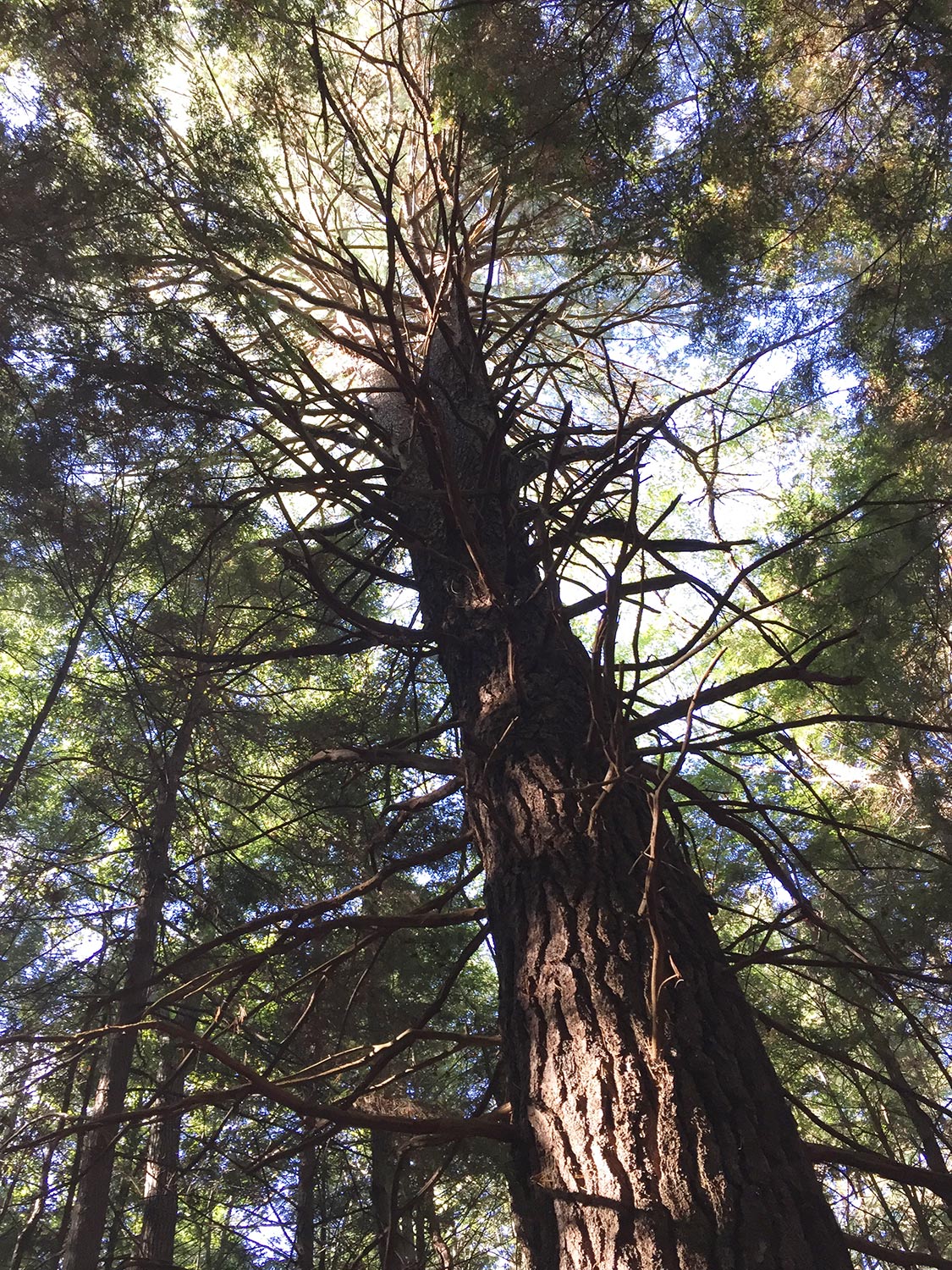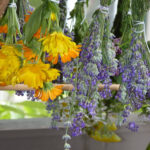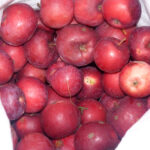I remember taking a drive with some friends and friends-of-friends some years ago. As we were driving through a really nice forest preserve with some old trees, one of my friends in the car said, “There’s so much money there in the trees, some of them would be worth more than $1500.” He went on to talk about how his family had recently logged their property and earned over $25,000. Other people in the car jumped in and talked about the forest’s beauty and argued against him; and I just listened. Finally, I responded and said, “Every living being has a spirit. I hope that forest stands forever. They deserve to live as much as you or I.” Before this conversation had started, I was listening to the singing of that forest, so happy, so safe to be preserved. This experience stayed with me, and was a good reminder about the many lenses through which we might view the world. One person sees a forest and sees money, and another ones sees spirit. The spirit in all things, the singing of the trees and of the land. It is a way of attunement, a choice to see certain things and set aside certain others.
And so, we pick up where we left off, in the realm of spirit. In last week’s post, I explored the preliminaries to plant spirit communication: cultural deprogramming, learning your spirit language, and meditation techniques to get you started. If you haven’t yet read that post, I suggest you start there and then come here. This week’s post gets into a few different kinds of plant spirit communication that you can do.
A Few Principles for Plant Spirit Communication
Before we get into the communication itself, let’s talk about a few principles that are helpful to understand:

Communication comes in many forms. It might not be a message that you get but a song, a phrase, an image, a feeling, a bit of laughter or joy. It might not be anything profound but “I’m hungry!” Just accept what comes. Plants are people too. Not everything is always super serious.
Plants work by the seasons. Time is different to plants, and part of why meditation (as I discussed last week) is so helpful is that it encourages us to slow down enough to be present with the plants and to move more at their pace and speed. It might be that a single message takes a long time to convey–a period of days, weeks, months, or years. And that’s ok–if you want to communicate with nature, you have to be moving at nature’s speed. I wrote about this in my tree series–the trees and perennials go deep within their roots and slumber during the winter, so you can’t always communicate with them at certain times of the year.
Not all places and plants are “awake.” Depending on the kinds of land-use history and previous interaction of humans in the last few generations on your land, the land may have gone to sleep and the spirits may be present, but not very active, or at least, not attuned to humans wanting to communicate. I think this is why the “approaching” material that I offer next is so important.
Not all plants have direct experience, but they do have ancestral knowledge. Its also possible that for the plants, as well as for us, communicating is nothing more than an ancestral memory. I’ve been to forests here where the trees said I was the first to talk of them in several generations, certainly in their lifetimes. They conveyed to me that they knew it could happen but they hadn’t ever experienced it. So it is like we are all learning together–and that is a very exciting place to be. This is likely to be more true in places where indigenous peoples were eradicated from the land several centuries ago–it is likely that those indigenous peoples were the last that spoke to them. Here, that would be at least two centuries, most, unfortunately.
Not all plants jive well with humans. Certain trees and plants don’t have energy–or physical plant matter–that is beneficial for humans. Elm is notoriously known for this in several cultures. Many of the poisonous plants, like poison ivy or poison hemlock, also may not really want to talk.

Some plants really love humans. On the other hand, some plants really love humans and have been working with them for millennia. These are often cultivated plants (think about how far humans have spread apple trees!) or healing herbs like rosemary, parsley, sage, lavender, lemon balm, and more.
Personal gnosis is personal. Each of us may get different things, our own “truths” as part of plant spirit communication. This does not mean that what you experience is the same as everyone else–or should necessarily be shared with others. This is for two reasons: first, this work is deeply personal, and there are messages that are meant only for you; others may need to find their own way to this work. But second, different plants may reveal different aspects to you (which may appear contradictory and actually isn’t).
Plants are individuals. Just like not all humans who grew up in the same town and look similar have a tremendous variety in terms of ability, interests, and personality, so do plants. Plants and trees are each individual; keep this in mind when interacting with them. Plants are people too.
Approaching and Honoring Plants and Trees
And now we begin the work of communication itself. Just like with any other kind of communication, not every tree or plant out in the world is excited to talk to you and wants you in their space. I actually think going up to a plant or tree and assuming that they do want to interact with you intimately is kind of like going up to a random person on the street and starting to talk their ear off. Plants are not ours to do what we want with; they deserve our respect as any other person would.
If you are approaching a new plant or tree with the interest in communicating, I find that approaching a plant in respect first, and asking to communicate, is generally a good way to begin. If you begin the nature meditations I talked about last week near plants or trees you want to communicate with, that can already help pave the way for plant spirit communication.
If you are approaching new plants, here are a few things I like to do:
- Find a plant or tree to which you are drawn. Perhaps you are walking in the woods and a certain tree or plant catches your eye, and you feel compelled to go over. Or you have a plant or tree you are drawn to every day on your walk to work. These are great plants to start working within this way.
- Sit quietly with the plant and see how it “feels.” Do you feel invited in? Do you feel like the plant wants me gone? Most plants are usually pretty friendly, but not all are. Further, given the history of land use (spray, cutting, etc) the plant may want left alone (or not be willing to do anything more until land healing or reparations can take place).
- Making a simple offering. I usually use my home-grown tobacco or cornmeal for such an offering, if I feel a physical offering is warranted. Singing to the plants, playing music, or drumming with them is also a wonderful offering. Finally, your own liquid gold (urine) diluted 1 part urine to 10 parts water, is a fine gift to be poured on the roots. This is part to honor the plant, but also to help with the “awakening” pieces I discussed above.
- Tend the plant if it needs to be tended. Maybe you can aid the plant in some way–scattering seeds, removing pests that are eating the plant, adding some mulch, etc. Make sure you are helping and not harming.
I will say that for plants that I’ve cultivated from seed planted as seedlings, they are always happy to communicate (as I helped them grow strong and tended them for likely months or years already), but for those, I find out in the world, more of this kind of work is needed. This work can take time and multiple visits to the same site before you are ready to move on–again, nature’s time is not always human time.
Types of Plant Spirit Communication
Now that we have some of the preliminaries out of the way, we can explore a few specific techniques for this work:

Inner Listening: The first type of plant spirit communication is a simple inner listening technique. I say “inner listening” but it doesn’t just have to be using clairaudience, rather, it can be using any of the different communication techniques I listed above. The basics of inner listening are these: you begin by cleaning your mind and then opening yourself up to any messages, whether they come in words, images, feelings, songs, energies, etc. You can use the plant meditation above as a precursor to your inner listening–just pause, see what you experience. This is the first and, in my opinion, most useful step of plant spirit communication. You won’t always get messages, but you may, and the more you practice this, the better you will get (and the quicker messages will come) with time. You might do this by listening silently or with aid of a drum, rattle, or another steady beat.
Group Listening: You can do this individually or in a group of people. I once remember a group of us sitting around a tree at a workshop; we tapped on the tree’s roots and listened to the tree as a group, each sharing our experiences of what we saw, heard, or felt. This allowed us to affirm and confirm what each individual was hearing; it was also fun to experience how different people in the group had messages with different communication strategies (some very visual, some auditory, others feeling based, and so on). This is especially good for new people who are still learning to trust what they are experiencing and want some confirmation.
Divination Tools: Using a divination tool to ascertain messages from plant spirits is another technique that is quite effective. You might use a pendulum for a simple yes/no, an oracle deck (like Philip Carr Gomm’s Plant Spirit Oracle), a tarot deck (like the Tarot of Trees), ogham, runes, and more. Divination tools are often much more accessible than inner listening to beginners on the path of plant spirit communication–however, interpreting the messages from an oracle can be an art form in and of itself! I would suggest you start with something really direct and clear if you are new to divination, like a pendulum or a coin that would give a clear yes/no answer. Then you can move into more complex uses.
Inner Journeying: Inner journeying to meet a plant spirit and have a conversation or lesson, is another way that you can connect deeply with plants and learn from them. this is a more advanced technique and will be discussed in next week’s post in more detail, as this post is already getting pretty long!
Outer Listening/Observation: Nature is wonderful at giving messages to those who are paying attention. Sometimes, you might get a clear outer message–asking a question and having a leaf drop right in front of you, watching the leaves or flowers bend in the breeze, having a hummingbird come up right to the plant you are working with. It is helpful to keep one’s inner and outer senses open!
Energy exchange. Sometimes the main communication isn’t a message at all but an exchange of energy. Placing your hands on the plant, sitting with it, or leaning against it (if it’s a tree) can all help facilitate this energy exchange. Sometimes this energy exchange can be the precursor to other things.
You as a Plant Spirit Communicator
This is a little hard to put into words, but let me see if I can. In classical rhetoric, there was something called “ethos”; this was one of the three ways that Aristotle articulated that could help a person be persuasive. The concept of ethos is useful here for plant spirit communication. Ethos is your credibility, the reputation and personal force that you bring to the situation, or that you create for yourself. Two kinds of ethos exist: invented and situated. Invented ethos is when you have to build your ethos in a situation from scratch; e.g. whoever it is you are communicating with doesn’t know you or who you are. Situated ethos is ethos you bring to a situation; they have heard of you before (good or bad) and so they are going in with some more information about you.
When you first start working with plants; plants of a specific species or area, whatever it is, especially if you haven’t done any other spiritual work in that area, you likely will have to prove yourself a bit. Invent your ethos, so to speak. Offerings, deep listening, not imposing yourself, and being respectful all help here a lot. If you do that enough, those actions will carry with you, and you will build a connection (situated ethos) to those plants over time.
So on the other side of this, maybe you’ve been cultivating a relationship with a plant, or a plant species, or a particular area, for a long time. The more you do with that plant species or area, even before you start trying to do some of the spirit communication I’ve outlined above, the more that the plants and land will be open to you. You come in, then, with situated ethos. (Of course, if you are doing bad things to the land, you can imagine how that would go!)
This is to say, plants remember. The land remembers. Plants speak to each other; you develop a relationship with a tribe of plants (a species, an ecosystem) and the more you work with one, the more all will be open. Over time, this can be a tremendous tool.
That’s it for this week’s post–I tried to cover all of the bases of plant spirit communication, at least the ones that I have used and know well. If anyone has other methods or information, please do share in the comments! Next week, we’ll explore plant spirit journeying in more detail.




Reblogged this on Paths I Walk.
Reblogged this on Blue Dragon Journal.
Amazing. Reblogging and appreciate your wisdom
Thank you!
[…] via Plant Spirit Communication, Part II: Communication in Many Forms — The Druid’s Garden […]
I really enjoyed reading this.
Thank you, Jean!
A very interesting set of observations and ideas you present here. Also, you bring home to me just how blessed I have been. Most of this type of communication has been, in my experience at least, as natural as breathing for over fifty years.
Around the age of ten, I became aware of interactions between trees and myself, never realizing most people don’t experience anything of the sort. I also rather quickly reached the conclusion that it is not always good to talk about everything you know or experience, especially when the listeners don’t have any experience with which to relate. Obviously it isn’t for everyone.
I look forward to seeing the next post on this subject.
Thanks for your comment. I wonder—why do some children get to have this experience and others do not? Is it parenting and environment, personality,etc? An interesting question!
Have been pondering this question since early this morning, don’t seem to have any sort of answer though. I personally know of only one other individual beside myself who is able to communicate with plants in any consistent and meaningful way. Our backgrounds are different, our beliefs are vastly different, yet we have very similar experiences out in the natural world. We also share a mind or spirit connection that can be pretty intense at times. Definitely some food for thought.
It is some food for thought. I was at a spiritual event this weekend, and talked to some other folks about their own experiences. I’m not sure what “it” is–all had good stories of childhood to share, but each were so different. It is something interesting to ponder further
Reblogged this on dreamweaver333.
[…] via Plant Spirit Communication, Part II: Communication in Many Forms — The Druid’s Garden […]
[…] Dana over at The Druid’s Garden continues her evocative series on Plant Spirit Communication this week, looking at Communication in Many Forms: […]
Reblogged this on Gentle Ignition and commented:
Thank you. I have re-blogged to Gentle Ignition.wordpress.com
i was fortunate to be approached by a pine tree, years ago. it reached out to me, and that is how my journey with trees began. up until that point, perrennials were my main focus. many times they have gifted me with energy when mine was too low. they are generous, & even in winter will try to communicate if they feel i am in need.
So many of the plants, trees, and animals in this living earth are as anxious for connection as we are. Thank you for sharing your story!
Reblogged this on Enter the Grove.
I just love this subject. I have been in communication with trees since I was a child. It is so interesting to see someone else talking about it. Have you written a book around this?
Blessings, Lisa
Forestcrow–not yet :).